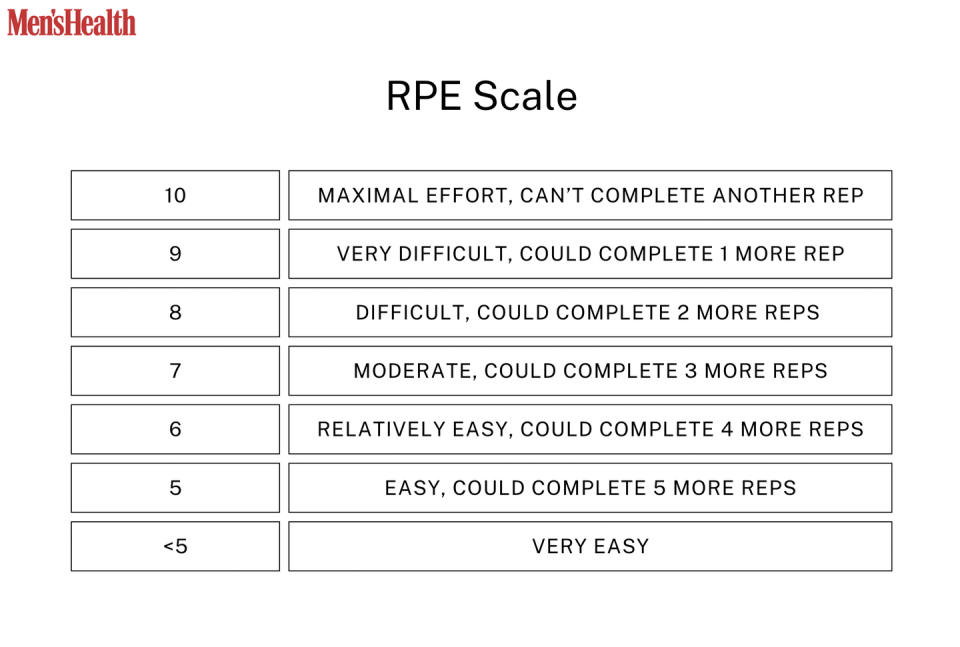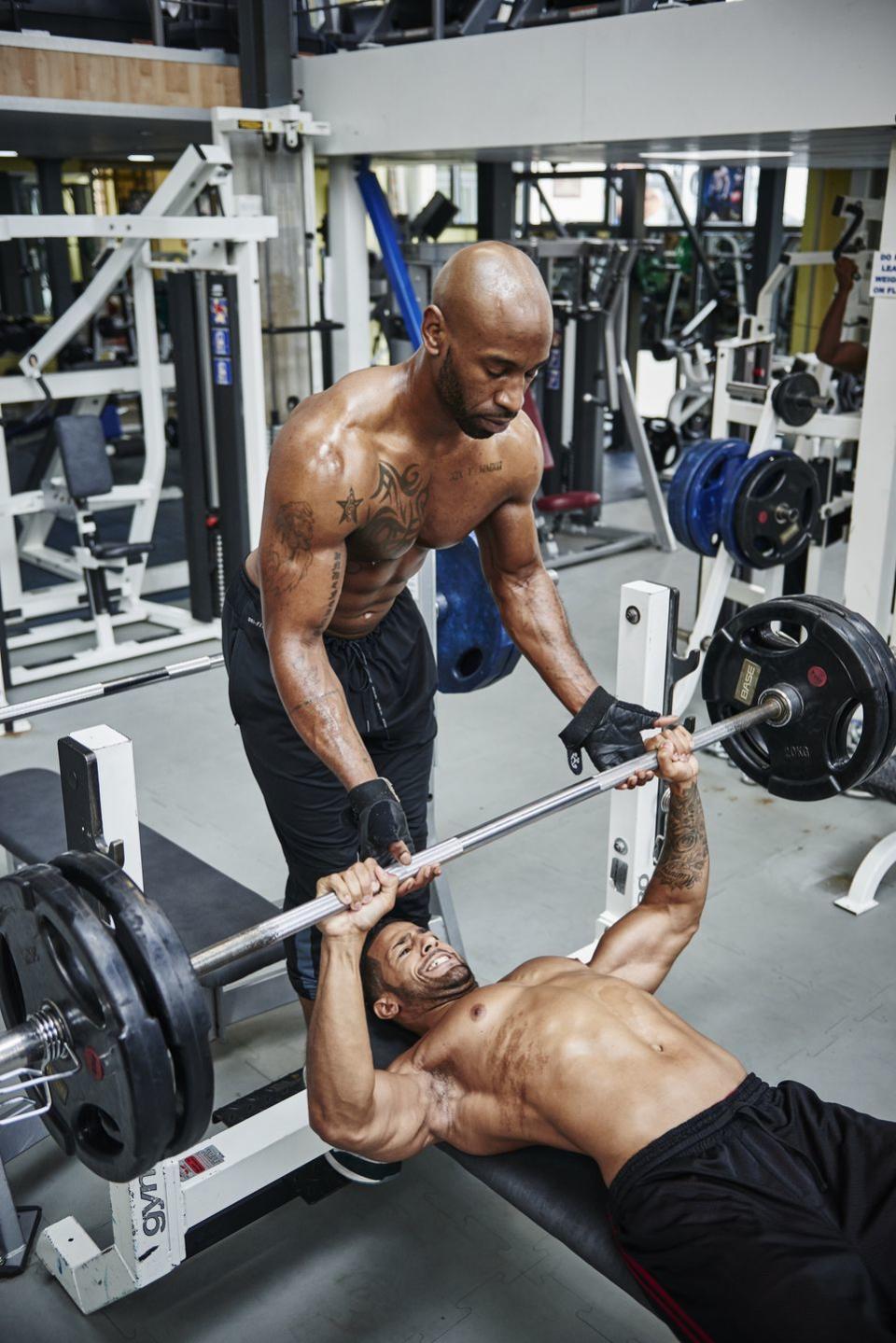RPE Meaning: How to Use the RPE Scale for Strength and Size

Achieving the ideal training intensity can be challenging. If you're breezing through all your sets, you might not be maximising your muscle gain potential. However, pushing yourself too hard towards failure can raise the risk of injuries. So, how can you find the right balance? We're glad you asked.
Utilising the Rate of Perceived Exertion (RPE) scale allows you to gauge your effort level accurately, helping you achieve optimal progress without overexerting yourself. For the purpose of this article, we will focus on the RPE meaning in relation to lifting weights.
Here's our guide to nailing your training intensity so you can work smarter, and harder.
RPE Meaning: What Is the RPE Scale?
The RPE scale is a common method of assessing the intensity of exercise, influenced by the BORG rating of perceived exertion scale. The RPE scale has been widely researched and has become the standard for measuring perceived exercise exertion.
The RPE scale ranges from one to 10 (whereas the BORG scale ranges from 6-20). A 10 rates as maximum exertion, and one as little to no exertion. Think of 10 as the equivalent of maxing out on a deadlift and not being able to perform another rep – one would be sitting on the sofa.
The RPE Scale

What Is the RIR Scale?
Another researched method of measuring exertion that often sits alongside the RPE method is the RIR scale. This simply means 'Reps In Reserve'. With this scale, RPE is flipped on its head, with one meaning 'one rep in reserve'. For example, you complete a set of 10 reps at a moderate weight. At the end of the set, you estimate you could have completed five more reps. This means you have five reps in reserve.
It has been recently suggested that using RIR to inform your RPE is superior to traditional RPE – as defined above – for assessing intensity during resistance training.
So, which is best: RPE or RIR? Ideally, using both scales in combination (like the above diagram) is the most sensible approach to measuring exertion in your training.
RPE Calculator: How Much Should I Push Myself?
For strength and muscle gain, ideally, using the RPE scale, you want to be pushing yourself to a seven or eight out of 10 at the end of your sets. You shouldn't have more than two or three more reps left in the tank. If your perceived exertion drops below seven, and things feel easier, then you know that you can increase the intensity of your training and possibly even up the weights in the next session.
For predicted weights in relation to your RPE, you can use an RPE calculator. However, it's important to emphasise that these should be used as a rough guide and your own results may vary.
What Are the Benefits of the RPE Scale?
Strength Gain

One method of individualising resistance training is 'autoregulating'. This approach has you adjust training variables, such as weight and reps, based on daily fluctuations in performance. This approach often utilises RPE as a way to decide training loads for the day.
In a study published in Frontiers in Psychology, researchers compared 1 rep max (1RM) – where you use percentages of the total weight you could possibly lift – and RPE as a loading strategy. It found both loading types were effective. However, it also found that RPE based loading may provide small advantages in the majority of individuals, making the use of RPE potentially beneficial beyond measuring progress.
Muscle Gain
The RPE scale enables us to utilise progressive overload efficiently, facilitating muscular growth. By challenging our muscles through adjustments in reps, sets, weight, and other factors, we induce adaptation, leading to increased muscle mass and strength. This adaptation is supported by research published in the International Journal of Environmental Research and Public Health.
Self-efficacy
The concept of self-efficacy, which relates to one's self-belief and confidence, becomes a positive cycle when you witness improvement in your lifts using the RPE scale. A recent review has linked increases in self-efficacy to exercise adherence and maintenance of new habits.
Having a simple scale to measure your effort and incrementally make adjustments and improvements can massively boost your feelings of confidence in the gym. This creates momentum and increases progress in your training, increasing your motivation to workout.
Autonomy in Your Training
When measuring the results of subjects against the RPE scale, a study published by the South African Journal of Sports Medicine found that the scale is a valid and reliable way of measuring intensity. By using this natural awareness-based measure, no fitness tech necessary, we can tune in to our body's response to training and gauge results, therefore supporting training autonomy.
What Are the Limitations of the RPE and RIR Scales?
The RPE and RIR scales are good indicators of progress, however there's a chance that the vast majority of gym goers don't have a complete awareness of exactly what an eight or nine out 10 truly feels like.
To gain a better understanding of this, we can occasionally push closer to technical failure, if it's safe for you, aiming for what you consider a ten. This provides a clear benchmark for measurement. While the majority of evidence concludes that pushing yourself to failure –in sets isn't always necessary for muscle growth or strength gains, it can be a useful measure of your own limits, and can help you to use the RPE and RIR scales more effectively.
The Research
Here you can read more about the science cited in this article:
The Borg Rating of Perceived Exertion (RPE) scale - https://academic.oup.com/occmed/article/67/5/404/3975235?login=false
Borg's perceived exertion and pain scales - https://psycnet.apa.org/record/1998-07179-000
Perceived Exertion for Practitioners - https://books.google.co.uk/books?hl=en
Novel Resistance Training–Specific Rating of Perceived Exertion Scale Measuring Repetitions in Reserve - https://journals.lww.com/nsca-jscr/fulltext/2016/01000/novel_resistance_training_specific_rating_of.31.aspx
Application of the Repetitions in Reserve-Based Rating of Perceived Exertion Scale for Resistance Training - https://journals.lww.com/nsca-scj/fulltext/2016/08000/application_of_the_repetitions_in_reserve_based.10.aspx
RPE vs. Percentage 1RM Loading in Periodized Programs Matched for Sets and Repetitions - https://www.frontiersin.org/journals/physiology/articles/10.3389/fphys.2018.00247/full
Maximizing Muscle Hypertrophy: A Systematic Review of Advanced Resistance Training Techniques and Methods - https://www.ncbi.nlm.nih.gov/pmc/articles/PMC6950543/#:~:text=Muscle%20hypertrophy%20occurs%20when%20muscle,muscle%20protein%20breakdown%20%5B8%5D.
Exercise self-efficacy - https://europepmc.org/article/med/11381353
Validity and reliability of the session RPE method for monitoring exercise training intensity - https://www.ajol.info/index.php/sasma/article/view/31891
Effects of resistance training performed to repetition failure or non-failure on muscular strength and hypertrophy: A systematic review and meta-analysis - https://www.sciencedirect.com/science/article/pii/S2095254621000077
You Might Also Like


